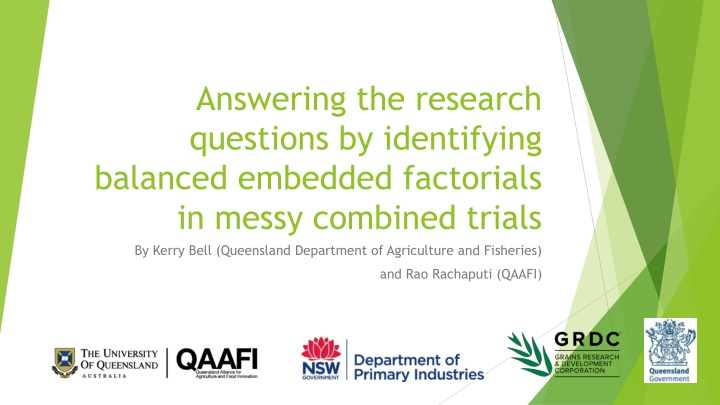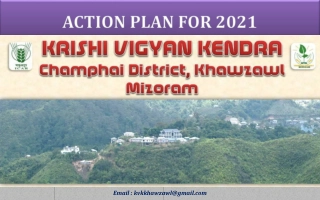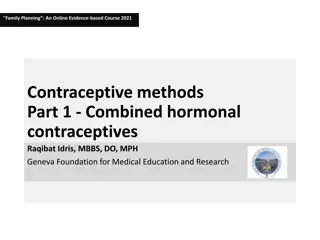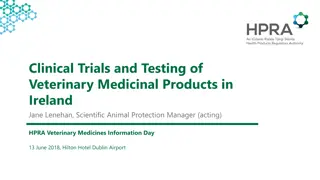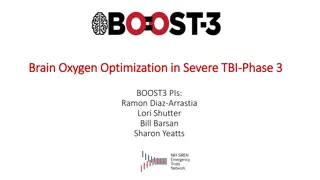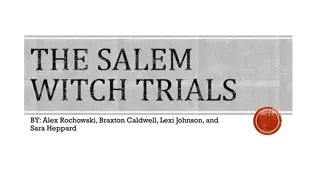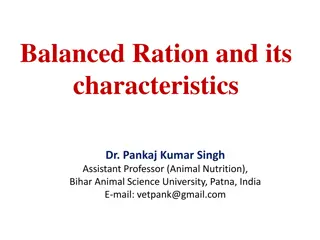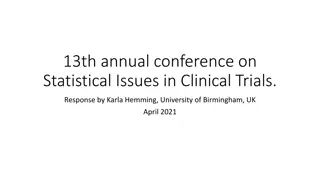Identifying Balanced Factorials in Combined Trials for Agronomy Research
Collaborating on a project in Queensland's agriculture sector, the biometry team explores combined trials and embedded factorials to inform crop management decisions for the grains industry. The study delves into various environmental factors and their impact on crop conditions, aiming to cluster similar responses and enhance understanding for improved practices.
Download Presentation

Please find below an Image/Link to download the presentation.
The content on the website is provided AS IS for your information and personal use only. It may not be sold, licensed, or shared on other websites without obtaining consent from the author.If you encounter any issues during the download, it is possible that the publisher has removed the file from their server.
You are allowed to download the files provided on this website for personal or commercial use, subject to the condition that they are used lawfully. All files are the property of their respective owners.
The content on the website is provided AS IS for your information and personal use only. It may not be sold, licensed, or shared on other websites without obtaining consent from the author.
E N D
Presentation Transcript
Answering the research questions by identifying balanced embedded factorials in messy combined trials By Kerry Bell (Queensland Department of Agriculture and Fisheries) and Rao Rachaputi (QAAFI)
Background I work at Department of Agriculture and Fisheries (DAF, Queensland) in the biometry group at Toowoomba, working in SAGI project (Statistics for Australian Grains Industry) funded through the Grains Research and Development Corporation (GRDC). Work collaboratively with field crop researchers on GRDC projects about making crop management decisions. Over the last 5+ years there has been more emphasis on combining information from many environments defined by sites x years x other factors (e.g. time of sowing, water regime). This allows the grains industry to see how management practices change with different conditions
Overview of talk 1. Background of case study 2. Define the research questions 3. Explore environment x management embedded factorial 4. Cluster environments with similar responses 5. Relate environmental responses to crop conditions
1a. Background: Pulse Agronomy - Mungbean trials Differences in treatments across mungbean trials was driven by: What was agronomically appropriate for the location and decisions made by individual researchers. Addressing shifting ideas what growers / funding bodies wanted investigated.
1b. Trials for analysis (2016-2018) (16 trials) <------------ Core factors ------------ <------------ Other factors ------------ Year Region Site Varieties Row spacing (cm) 25, 50, 100 Target plant pop TOS Water regime & Other factors 2016 2017 2018 CQ CQ CQ Emerald Emerald Emerald Jade Jade, Satin II 25, 100 Jade 10, 20, 30, 40 30 30 1, 2, 3 1, 2, 3 1, 2 Dryland, Irrigated (Dryland, Irrigated) * (N0, N1, N2, N3) (Dryland, First Bud, First Flower, Mid pod fill) * (yes/no Foliar N) Dryland, Irrigated Dryland, Irrigated Dryland, Irrigated Starting moisture: Low, Medium, High PP+0, PP+1, PP+2, PP+3 PP+0, PP+1, PP+2, PP+3 Dryland Dryland Dryland, Flowering (F5), Early Podding Dryland, Incrop, Incrop(x2) PP+0, PP+1, PP+2 PP+0, PP+1, PP+2 PP+0, PP+1, PP+2 50, 100 2016 2016 2017 2017 2018 2018 2016 2016 2017 2017 2018 2018 2018 SQ SQ SQ SQ SQ SQ NSW NSW NSW NSW NSW NSW NSW HRS Kingaroy Hermitage Kingaroy Hermitage Kingaroy Narrabri Trangie Narrabri Trangie Breeza Narrabri Trangie Jade Jade Jade Jade Jade Jade Jade Jade Jade Jade Jade Jade Jade 25, 50, 100 25, 50 25, 100 25, 100 25, 50, 100 25, 50, 100 40, 60, 100 33, 66, 100 35 33, 66 35 35 25, 50 10, 20, 30, 40 10, 20, 30, 40 20, 30, 40 20, 30, 40 30 30 10, 20, 30, 40 20, 30, 40, 50 20, 30, 40, 60 20, 30, 40, 60 20, 30, 40, 60 20, 30, 40, 60 20, 30, 40, 60 1, 2, 3 1, 2, 3 1 1 1, 2 1, 2 1, 2 1, 2 1, 2 1 1 1 1
Categorised into Narrow, Med & Wide Varieties Row spacing (cm) Jade 25, 50, 100 Jade, Satin II 25, 100 Jade 50, 100 Convert to environments Use actual plant density Only Jade Year Region Site Target plant pop TOS Water regime & Other factors 2016 2017 2018 CQ CQ CQ Emerald Emerald Emerald 10, 20, 30, 40 30 30 1, 2, 3 1, 2, 3 1, 2 Dryland, Irrigated (Dryland, Irrigated) * (N0, N1, N2, N3) (Dryland, First Bud, First Flower, Mid pod fill) * (yes/no Foliar N) Dryland, Irrigated Dryland, Irrigated Dryland, Irrigated Starting moisture: Low, Medium, High PP+0, PP+1, PP+2, PP+3 PP+0, PP+1, PP+2, PP+3 Dryland Dryland Dryland, Flowering (F5), Early Podding Dryland, Incrop, Incrop(x2) PP+0, PP+1, PP+2 PP+0, PP+1, PP+2 PP+0, PP+1, PP+2 2016 2016 2017 2017 2018 2018 2016 2016 2017 2017 2018 2018 2018 SQ SQ SQ SQ SQ SQ NSW NSW NSW NSW NSW NSW NSW HRS Kingaroy Hermitage Kingaroy Hermitage Kingaroy Narrabri Trangie Narrabri Trangie Breeza Narrabri Trangie Jade Jade Jade Jade Jade Jade Jade Jade Jade Jade Jade Jade Jade 25, 50, 100 25, 50 25, 100 25, 100 25, 50, 100 25, 50, 100 40, 60, 100 33, 66, 100 35 33, 66 35 35 25, 50 10, 20, 30, 40 10, 20, 30, 40 20, 30, 40 20, 30, 40 30 30 10, 20, 30, 40 20, 30, 40, 50 20, 30, 40, 60 20, 30, 40, 60 20, 30, 40, 60 20, 30, 40, 60 20, 30, 40, 60 1, 2, 3 1, 2, 3 1 1 1, 2 1, 2 1, 2 1, 2 1, 2 1 1 1 1 Row spacing treatments vary and not all trials have a range of plant densities.
2a. Define the research questions Practices that offer reliable yield potential in regional environments . Treatments available Project goals Crop management practice: 1. Row spacing x Env 2. Plant density x Env 1b. Narrow vs Wide 2a. Response curves 2a. Yields predicted @ 30 plants/m2 1a. Narrow vs Medium Embedded factorials: Use narrow row spacing only Only use trials with a reasonable Conditions: range of plant densities Only include target densities of 30 plants/m2 (recommended) Only use trials with both row spacing treatments
2b. How do we address each question, e.g. Narrow vs Wide row spacing at 30 plants/m2? Embedded factorial Year Region Site Varieties Row spacing Target plant pop TOS Water regime 6 Env 6 Env 2016 2017 2018 CQ CQ CQ Emerald Emerald Emerald Jade Jade, Satin II 25, 100 Jade 25, 50, 100 10, 20, 30, 40 30 30 1, 2, 3 1, 2, 3 1, 2 Dryland, Irrigated (Dryland, Irrig) * (N0a,N1,N2,N3) (Dryland, First Bud, First Flower, Mid pod fill) * (yes/no Foliar N) Dryland, Irrigated Dryland, Irrigated Dryland, Irrigated Start moist.: Low, Medium, High PP+0, PP+1, PP+2, PP+3 PP+0, PP+1, PP+2, PP+3 Dryland Dryland Dryland, Flowering (F5), Early Podding Dryland, Incrop, Incrop(x2) PP+0, PP+1, PP+2 PP+0, PP+1, PP+2 PP+0, PP+1, PP+2 50, 100 6 Env 2016 2016 2017 2017 2018 2018 2016 2016 2017 2017 2018 2018 2018 SQ SQ SQ SQ SQ SQ NSW NSW NSW NSW NSW NSW NSW HRS Kingaroy Hermitage Kingaroy Hermitage Kingaroy Narrabri Trangie Narrabri Trangie Breeza Narrabri Trangie Jade Jade Jade Jade Jade Jade Jade Jade Jade Jade Jade Jade Jade 25, 50, 100 25, 50 25, 100 25, 100 25, 50, 100 25, 50, 100 40, 60, 100 33, 66, 100 35 33, 66 35 35 25, 50 10, 20, 30, 40 10, 20, 30, 40 20, 30, 40 20, 30, 40 30 30 10, 20, 30, 40 20, 30, 40, 50 20, 30, 40, 60 20, 30, 40, 60 20, 30, 40, 60 20, 30, 40, 60 20, 30, 40, 60 1, 2, 3 1, 2, 3 1 1 1, 2 1, 2 1, 2 1, 2 1, 2 1 1 1 1 2 Env 3 Env 8 Env 8 Env 2 Env 2 Env Select trials that have Narrow & Wide row spacing. Embedded factorials use only some of the treatments. aOnly N0 was used in embedded factorial.
3a. Steps to define factors used in embedded factorials (analysing with REML procedure) Levels of OtherTrt Treatments in an embedded factorial get same level (e.g. 0) Treatments not in an embedded factorial get unique levels This accounts for all treatments 1. Are there treatments left out of the embedded factorial/s? Create factor to identify these treatments (e.g. OtherTrt ). Go to step 2. yes no 2. Is there more than one embedded factorial? (Remember they should not have overlapping treatments.) Levels of Group Define different embedded factorials (e.g. 1, 2 ) Treatments not in an embedded factorial get missing values Create factor to define different embedded factorials (e.g. Group ). Go to step 3. yes no 3. Define factors and/or continuous variates for each of the embedded factorial/s. Levels of factor for embedded factorial: Levels treatments in embedded factorial as per normal. Treatments not in embedded factorial get missing values
4a. Significant E x M interactions with lots of environments! Environment CQ16Emld_DryTOS1 Narrow Wide 1461.1 Environment SQ17HRS_Dry Narrow 2797.2 Wide 2332.0 1259.3 CQ16Emld_DryTOS2 1270.0 1178.0 SQ17HRS_Irrig 3204.5 2341.9 CQ16Emld_DryTOS3 1212.5 1173.8 SQ17King_High 1342.6 821.4 Fixed model ~ OtherTrt + Env * RowSpacing CQ16Emld_IrrigTOS1 1852.8 1639.3 SQ17King_Low 1258.0 741.0 CQ16Emld_IrrigTOS2 2478.3 1999.3 SQ17King_Med 1340.5 1076.0 CQ16Emld_IrrigTOS3 1882.7 1582.6 SQ18HRS_PP0TOS1 2514.6 2165.4 Fixed term OtherTrt Env RowSpacing Env.RowSpacing Wald stat 2417.32 915.9 208.4 94.28 n.d.f. 280 42 1 42 F statistic 8.22 19.12 208.4 2.15 d.d.f. 383.5 101.9 306.6 215.4 F pr <0.001 <0.001 <0.001 <0.001 CQ17Emld_TOS1DryN0 662.2 585.6 SQ18HRS_PP0TOS2 1047.9 858.2 CQ17Emld_TOS1IrrigN0 1107.7 853.2 SQ18HRS_PP1TOS1 2232.4 1182.7 CQ17Emld_TOS2DryN0 1226.5 1029.4 SQ18HRS_PP1TOS2 1171.9 649.2 CQ17Emld_TOS2IrrigN0 1681.1 1374.1 SQ18HRS_PP2TOS1 2358.0 1543.0 CQ17Emld_TOS3DryN0 1524.5 1019.0 SQ18HRS_PP2TOS2 1164.1 943.7 CQ17Emld_TOS3IrrigN0 1599.3 1105.1 SQ18HRS_PP3TOS1 2060.6 1980.7 In this example: Significant interactions between 43 environments and RowSpacing (Narrow, Wide) NSW16Nar_TOS1 1476.8 1304.0 SQ18HRS_PP3TOS2 1182.3 1013.9 NSW16Nar_TOS2 803.4 726.7 SQ18King_PP0TOS1 1687.7 1179.1 NSW16Tran_TOS1 1302.3 1137.5 SQ18King_PP0TOS2 812.5 453.7 Not very helpful for summarising for agricultural industry! NSW16Tran_TOS2 1072.5 895.7 SQ18King_PP1TOS1 1470.7 1253.3 Clustering the environments with similar responses can make the task of summarising the results a lot easier for the researcher. SQ16HRS_DryTOS1 1234.4 857.6 SQ18King_PP1TOS2 879.3 393.0 SQ16HRS_DryTOS2 1569.1 1040.6 SQ18King_PP2TOS1 1719.9 1013.4 SQ16HRS_DryTOS3 1779.3 1467.1 SQ18King_PP2TOS2 677.4 571.8 SQ16HRS_IrrigTOS1 1271.2 822.6 SQ18King_PP3TOS1 1482.8 1192.8 SQ16HRS_IrrigTOS2 2535.5 1740.0 SQ18King_PP3TOS2 928.3 368.7 SQ16HRS_IrrigTOS3 1865.7 1316.9
4b. Cluster environments with similar responses Criteria imposed for clustering environments with similar responses: Within each cluster -> no significant interaction between environment and management factor (i.e. row spacing: narrow versus wide). Balance between minimising the number of clusters to satisfy this criteria and have agronomic relevance (e.g. use cut-off points that have economic meaning). In this case study the yield difference (or yield potential) between narrow and wide row spacing was used to develop five clusters. Fixed model ~ OtherTrt + Cluster + C1Env*C1RowSpacing + C2Env*C2RowSpacing + C3Env*C3RowSpacing + C4Env*C4RowSpacing + C5Env*C5RowSpacing No significant interactions between Env and RowSpacing within each of the 5 clusters.
4c. Clustering for narrow vs wide row spacing The five different clusters can now be more simply described rather than the 43 environments. Another approach is to relate the yield difference to environmental information. Some environmental information was available (min and max temperatures, starting moisture, in-crop water, sowing date, crop duration).
5. Relationship between yield advantage of narrow vs wide with environmental descriptors Multiple regression results Both regression trees and multiple regression were used to explore this relationship. Missing environmental descriptors for some environments. Maximum temperature (C) Regression tree results Maximum temperature (C) May get a better relationship if more variables were planned to be measured at the beginning of the project rather than see what was available at the end of the project! Starting moisture (mm)
Summary Defining and refining the research questions has shown to be even more relevant when there are unbalanced treatment structures. This assists in developing appropriate embedded factorials. The steps used for defining factors used in the embedded factorials was described: The steps can also be used for more general embedded factorials (including single trial analyses). Clustering of environments useful to reduce complexity of environment x management predictions. Relating results to external environmental descriptors can also be useful for describing the trends in the results.
Acknowledgements Thanks to the researchers (David Lester, Douglas Lush, Rao Rachaputi, Douglas Sands, Kerry McKenzie, Natalie Moore and researchers from NSW Ag from DAN000171 project) who have provided feedback on the usefulness of these methods and for the use of their research data as examples in this talk. The authors gratefully acknowledge the Grains Research and Development Corporation for the funding of northern SAGI and the projects used in these case studies.
